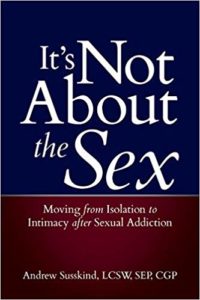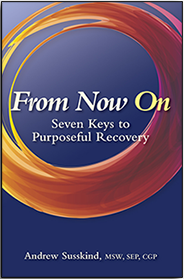Shame gets in your way if not processed fully. It registers as something wrong with you, rather than an action that was wrongful. Beginning as a painful event, it is stored as a character defect. So although shame can be experienced as an emotion or thought, it leaves its imprint in your body, as trauma specialist Babette Rothschild noted in her influential book, The Body Remembers. Feelings of shame are stored physically through your brain-body connection, and can result in panic attacks, migraines, irritable bowel syndrome, and other symptoms.
Because the shame associated with problematic sexual behavior is often buried, it is yet another form of the secrets and lies that accompany sexual compulsivity. For example, a client used to hire prostitutes, but was a deacon in his church. His profound shame resulted in him keeping this secret for years. Although he was a leader in his religious community, he lived a double life and felt completely disconnected from his wife and loved ones. By identifying and talking about shame, you can minimize this isolation, secrecy, and other harmful side effects.
You may use the terms shame and guilt interchangeably, but there’s an important distinction between the two. You feel guilt for what you do; you feel shame for who you are. The internal experience of shame is more profound than guilt: It goes to the heart of your identity. You become disillusioned with yourself, because compulsive sexual behavior is incongruent with your personal values.
Illuminating Shame
In 1988, John Bradshaw introduced the concept of developmental shame and the inner child to the mainstream public through his groundbreaking book Healing the Shame that Binds You. Bradshaw reminded us that we enter the world with a precious innocence, but then toxic shame seeps in. He was among the first clinicians to introduce inner child work, an exploration of your childhood innocence, as an opportunity for shame reduction. Children are inherently playful, loving, and spontaneous, and Bradshaw encourages you to find a way back to those qualities to reclaim your vitality. Your inner critic and self-loathing parts of you diminish as you heal from shame wounds—an essential component of sustainable long-term recovery.
When Bradshaw popularized the term inner child, he changed the conversation about addiction forever. Building more compassion for the quiet, suffering kid inside you decreases your vulnerability to relapse. As you identify and explore the themes and patterns of your turbulent childhood, you’ll build awareness and empathy for the suffering you’ve endured.
All of us want to be seen, heard, understood, respected, and valued. In the past you sexualized these unmet needs instead of processing them, and acting out these longings in turn produced shame. When a person’s childhood isn’t safe and unconditionally loving, they often play emotional catch-up, attempting to reclaim what wasn’t available then.




